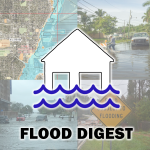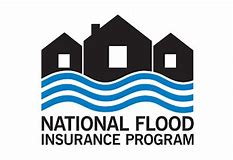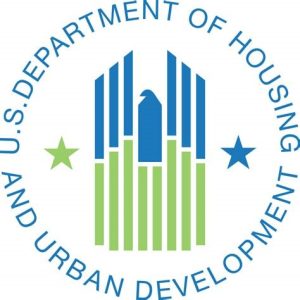New HUD flood standards
 A new resolution is introduced to help off-set federal flood insurance price hikes, HUD sets a new two-foot flood standard for homes, and Pinellas County sees upward of a 40% decrease in the cost of its federal flood insurance. It’s all in this week’s Flood Digest.
A new resolution is introduced to help off-set federal flood insurance price hikes, HUD sets a new two-foot flood standard for homes, and Pinellas County sees upward of a 40% decrease in the cost of its federal flood insurance. It’s all in this week’s Flood Digest.
 Tax Deductions for Flood Insurance Policies: FEMA’s recent announcement eliminating the 25% discount on National Flood Insurance Program (NFIP) policies for some in Southwest Florida is one of the reasons for the latest NFIP reform action in Congress. Congressman Byron Donalds (R-Florida) has introduced House Resolution 8102, and Senator Rick Scott (R-Florida) its Senate bill counterpart, to stem rising premiums from the NFIP’s Risk Rating 2.0: Equity in Action, its model for better pricing risk to rate. “When we try to get an understanding of especially Risk Rating 2.0, with FEMA, frankly, we’ve been met with not much of a response at all” Donalds told WINK-TV. “What we want to accomplish is trying to help citizens here and around the country who are dealing with the impacts of elevated insurance costs.” The proposed resolution would apply to NFIP and private flood insurance policyholders by providing an above-the-line deduction for flood insurance premiums, which the two lawmakers say will also encourage new purchases of flood policies.
Tax Deductions for Flood Insurance Policies: FEMA’s recent announcement eliminating the 25% discount on National Flood Insurance Program (NFIP) policies for some in Southwest Florida is one of the reasons for the latest NFIP reform action in Congress. Congressman Byron Donalds (R-Florida) has introduced House Resolution 8102, and Senator Rick Scott (R-Florida) its Senate bill counterpart, to stem rising premiums from the NFIP’s Risk Rating 2.0: Equity in Action, its model for better pricing risk to rate. “When we try to get an understanding of especially Risk Rating 2.0, with FEMA, frankly, we’ve been met with not much of a response at all” Donalds told WINK-TV. “What we want to accomplish is trying to help citizens here and around the country who are dealing with the impacts of elevated insurance costs.” The proposed resolution would apply to NFIP and private flood insurance policyholders by providing an above-the-line deduction for flood insurance premiums, which the two lawmakers say will also encourage new purchases of flood policies.
 New HUD Standards for Homebuilders: Like FEMA, the U.S. Department of Housing and Urban Development (HUD) also has an interest in making sure homes utilizing federal programs are flood resistant. Last month, HUD published a rule requiring stronger flood-protections on any homes rebuilt or repaired with federal housing aid. It includes a 2-foot elevation above the local flood level, and increasing the flood zones where these mandates apply. Both HUD and the industry at large are aware that these new rules will cause construction costs to rise – by up to $7,800 for single-family homes – but many officials have said this will be negligible when compared to the compounding cost of flood damage on the individual and the community. “This rule is a win for the country and a win for flood resilience… we have got to change the trajectory of losses in the country, and it’s only by having higher standards that we’re going to get there,” said Chad Berginnis, executive director of the Association of State Floodplain Managers. Proponents expect the rule to have much broader impacts and a much longer lifespan than previous attempts, which have historically been lost in the political tug-of-war that follows administration changes.
New HUD Standards for Homebuilders: Like FEMA, the U.S. Department of Housing and Urban Development (HUD) also has an interest in making sure homes utilizing federal programs are flood resistant. Last month, HUD published a rule requiring stronger flood-protections on any homes rebuilt or repaired with federal housing aid. It includes a 2-foot elevation above the local flood level, and increasing the flood zones where these mandates apply. Both HUD and the industry at large are aware that these new rules will cause construction costs to rise – by up to $7,800 for single-family homes – but many officials have said this will be negligible when compared to the compounding cost of flood damage on the individual and the community. “This rule is a win for the country and a win for flood resilience… we have got to change the trajectory of losses in the country, and it’s only by having higher standards that we’re going to get there,” said Chad Berginnis, executive director of the Association of State Floodplain Managers. Proponents expect the rule to have much broader impacts and a much longer lifespan than previous attempts, which have historically been lost in the political tug-of-war that follows administration changes.

Emergency erosion control work on Sunset Beach, FL., October 17, 2023. Courtesy, Pinellas County
Pinellas County Rewarded by FEMA: While some in Southwest Florida still stand to lose their federal flood insurance policy discounts, residents further north in Pinellas County, an area with the highest cumulative flood risk in Florida, will soon be getting further discounts on their policies. Unincorporated Pinellas County has strictly followed FEMA resilience planning to reduce premiums, leading to around $10 million in savings countywide. The county proctored its own vulnerability assessment and adopted its own coastal maps, developing a detailed damage plan in the process, putting it in the top 1% of FEMA’s Community Rating System participants. FEMA officials recently announced that some 20,000 county residents will see a 40% decrease in the cost of their NFIP flood insurance premiums as a result, demonstrating what true community-wide resilience looks like. “[These] investments pay off”, said Deanne Criswell, FEMA’s administrator. “Not only are the lives of your residents improved upon, but you are saving them money and creating a more resilient community for them to call home”.
LMA Newsletter of 5-13-2024

